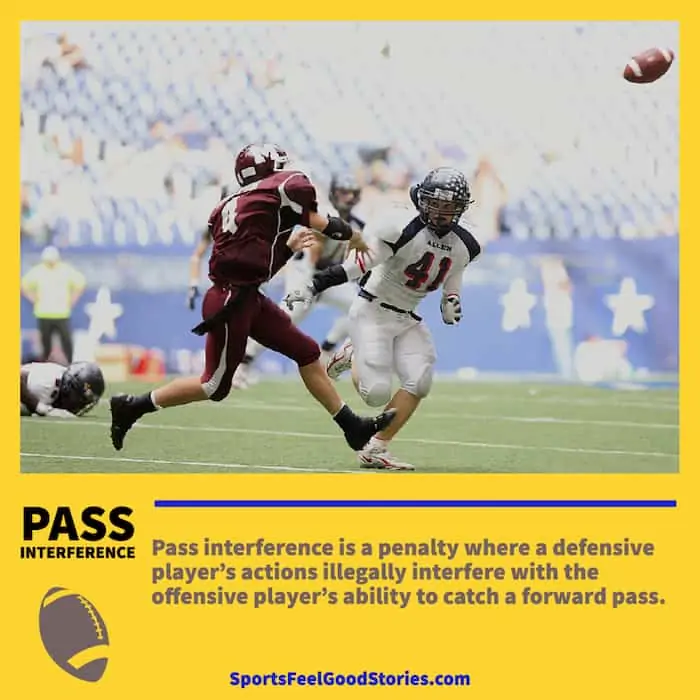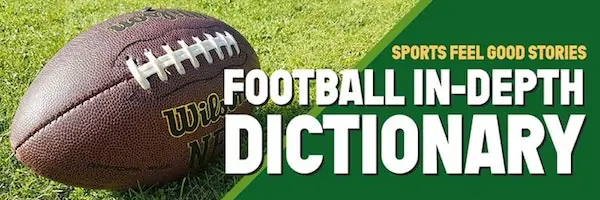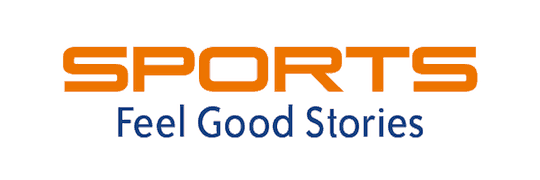Pass interference in football penalties can have a huge impact on the outcome of games. Do you like controversy? Well, a referee making a pass interference call can be controversial. Continue reading to learn more about one of the biggest penalties in football.
What is Pass Interference in Football?
Pass interference is a penalty where a defensive player’s actions illegally interfere with the offensive player’s ability to catch a forward pass. A penalty is assessed to the offending team.
Key Takeaways
In the NFL, pass interference is penalized at the spot of the foul, and the offensive team earns an automatic first down.
The most common pass interference calls are pulling a receiver’s arms or hands.
There is one key difference between holding and pass interference. Holding happens before the ball is thrown. Pass interference happens after the ball is thrown.
Pass interference is not applicable on plays involving the special teams. Even if it is a fake punt, pass interference cannot be called.
Offensive pass interference is less common than defensive pass interference. Offensive pass interference is penalized 10 yards from the previous spot.

Who commits pass interference?
Pass interference is committed by a member of the defense. Any member of the defense can be called for pass interference, but it is most commonly called on cornerbacks when isolated with a receiver. In the NFL in 2020, defensive pass interference was called 309 times and was the third most common penalty.
How is pass interference defined by the NFL?
According to the 2019 NFL Rulebook, the NFL says it is pass interference “when any act more than one yard beyond the line of scrimmage significantly hinders an eligible player’s opportunity to catch the ball.”
A- Contact by a player who is not playing the ball that restricts the opponent’s opportunity to make the catch.
B- Playing through the back of an opponent in an attempt to make a play on the ball.
C- Grabbing an opponent’s arm(s) in such a manner that restricts his opportunity to catch a pass.
D- Extending an arm across the body of an opponent, thus restricting his ability to catch a pass, and regardless of whether the player committing such act is playing the ball.
E- Cutting off the path of an opponent by making contact with him without playing the ball.
F- Hooking an opponent in an attempt to get to the ball in such a manner that it causes the opponent’s body to turn prior to the
ball arriving.
G- Initiating contact with an opponent by shoving or pushing off, thus creating separation.
Hall of Fame Fantasy Football Team Names Video
What is the penalty for pass interference?
In the NFL, pass interference is penalized by the offense getting the ball wherever the infraction occurred and a first down. In college football, pass interference can be penalized up to 15 yards. If the foul occurs less than 15 yards from the line of scrimmage, the ball will be spotted where the infraction happened. If the foul occurred more than 15 yards away from the line of scrimmage, then the ball will be spotted 15 yards past the previous spot.
Why do players intentionally commit the penalty?
It isn’t uncommon for a player to intentionally commit pass interference. This happens to prevent the receiver from getting a huge gain or a touchdown. If the referee deems it to be intentional pass interference in high school, he may give an additional 15-yard penalty.
How is it controversial?
Pass interference is among the most controversial calls there is in football. Since these calls are oftentimes subjective, many people may disagree with the call. Players can also create a contact or fake contact, making it even more difficult for the referees. This was seen in Super Bowl LV when the Chiefs had a couple of controversial pass interference calls on them against the Buccaneers.
What is the difference between holding and pass interference?
Many get these two penalties confused. There is one major distinction between the two. Holding is when a player holds another player before the pass is thrown. Pass interference is when the defensive player holds another player after the ball is thrown.
What is offensive pass interference?
Offensive pass interference is when an offensive player commits the pass interference infraction. This is less common because the defensive player would have to be better positioned to catch the ball than the offensive receiver. This is a 10-yard penalty from the previous spot. Offensive pass interference was called 62 times in the NFL in 2020 and was the 12th most common penalty.

Overtime
You’re on our Pass Interference Definition in Football page.
You might like:
How to Win at Yahoo Fantasy Football
History of College Football and NFL
